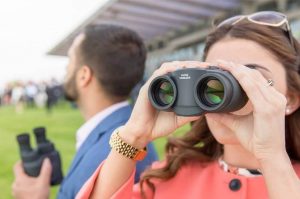 Let’s face it unless you have bionic eyes, your eyes can only see to a certain point.
Let’s face it unless you have bionic eyes, your eyes can only see to a certain point.
In fact, it’s hard to see anything clearly, especially if it is a distant away.
But with the use of binoculars, you can see anything that is far away with unimaginable clarity and sharpness.
But binoculars differ in performance. Some have specialized features to enhance your viewing experience.
In that, they offer better performance in any situation. And the image stabilized (IS) binoculars are such binoculars.
Designed for outdoor activities like hunting, sailing, boating, and stargazing, image stabilized binos are great for observing objects that are too far to see well with standard binos.
And what makes an IS bino so special is its image stabilization feature which minimizes the movement that interferes with your viewing. In addition, this feature enables you to observe objects that are in motion.
So let’s take a look at some of the best image stabilized binoculars in the market.
[wpsm_titlebox title=”Top pick” style=”3″]
[wpsm_column size=”one-half”]
[/wpsm_column]
[wpsm_column size=”one-half” position=”last”]
[wpsm_highlight color=”blue”]Canon 4625A002 15×50
[/wpsm_highlight]
[/wpsm_column]
[wpsm_column size=”one-half”]
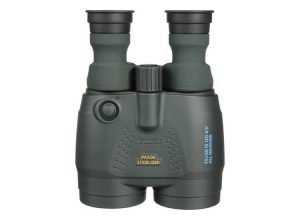
[/wpsm_column]
[wpsm_column size=”one-half” position=”last”]
[wpsm_list type=”check” hover=”1″ gap=”small”]
- Electronic Image Stabilization
- Fully Super Spectra Coatings
- Lead Free Glass
- Doublet Field Flattener
- All-Weather Design
[/wpsm_list]
[wpsm_button color=”red” size=”big” link=”https://www.amazon.com/dp/B00006I53P/?tag=opticzoo-20″ icon=”none” class=”” border_radius=”0 px” target=”_blank” rel=”nofollow”]Check now[/wpsm_button]
[/wpsm_column]
We’ve tested 6 image stabilized binoculars and the winner is above!
[/wpsm_titlebox]
Image Stabilized Binoculars Comparison Chart
| Model | ||||||
|---|---|---|---|---|---|---|
| Photo | ||||||
| Magnification | 15x | 18x | 10x | 14x | 12x | 20x |
| Objective Lens Diameter | 50 mm | 50 mm | 42 mm | 40 mm | 36 mm | 60 mm |
| Field of View | 78.7 m /1000 m | 64.5 m /1000 m | 113.7 m /1000 m | 70 m /1000 m | 86.98 m/1000 m | 52 m /1000 m |
| Angle of View | 4.5° (Actual) | 3.7° (Actual) | 6.5° (Actual) | 4° (Actual) | 5° (Actual) | 3° (Actual) |
| Minimum Focus Distance | 19.7' / 6 m | 19.7' / 6 m | 8.2' / 2.5 m | 16.4' / 5 m | 19.7' / 6 m | 45.93' / 14 m |
| Eye Relief | 15 mm | 15 mm | 16 mm | 13 mm | 14.5 mm | 13 mm |
| Exit Pupil Diameter | 3.3 mm | 2.8 mm | 4.2 mm | 2.9 mm | 3 mm | 3 mm |
| Diopter Adjustment | -3 to +3 | -3 to +3 | -3 to +3 | -4 to +4 | -3 to +3 | -7 to +7 |
| Battery | 2 x AA | 2 x AA | 2 x AA | 4 x AA | 2 x AA | No |
| Prism System | Porro | Porro | Porro | Roof (BAK4) | Porro | Porro |
| Weight | 2.6 lb / 1.2 kg | 2.6 lb / 1.2 kg | 2.4 lb / 1.1 kg | 2.71 lb / 1.23 kg | 23.3 oz / 660 g | 58.55 oz / 1.66 kg |
6 Best Image Stabilized Binoculars (as of April, 2024):
[wpsm_box type=”dashed_border” float=”none” text_align=”left” width=”100%” ]
1. Canon 4625A002 15×50 Image Stabilized Binocular Review
[wpsm_column size=”one-half”]
[/wpsm_column]
[wpsm_column size=”one-half” position=”last”]
[wpsm_list type=”check” hover=”1″ gap=”medium”]
- Electronic Image Stabilization
- Fully Super Spectra Coatings
- Lead Free Glass
- Doublet Field Flattener
- Water-Resistant, All-Weather Design
[wpsm_button color=”blue” size=”medium” link=”https://www.amazon.com/dp/B00006I53P/?tag=opticzoo-20″ icon=”none” class=”” border_radius=”0 px” target=”_blank” rel=”nofollow”]Check Price on Amazon![/wpsm_button]
[rehub_affbtn btn_text=”Check Price on B&H Photovideo!” btn_url=”https://bhpho.to/30siZrd” target=”_blank” ]
[/wpsm_column]
[/wpsm_box]
The Canon 4625A002 15×50 is a multipurpose image stabilized binocular that is built to withstand harsh environments. Weighing at 39 ounces, this bino has a 50mm objective lens that optimizes light transmission to give you pristine sights and bright images.
What is 15×50?
“15×50” refers to two key attributes: magnification power and lens diameter. Here’s a breakdown of what each part of the term means:
- 15x Magnification: The “15x” indicates that the binoculars have a magnification power of 15 times. This means that objects viewed through these binoculars will appear 15 times closer than they do to the naked eye. High magnification is useful for observing distant objects in detail, such as wildlife, celestial bodies, or distant landscapes.
- 50mm Objective Lens Diameter: The “50” refers to the diameter of the objective lenses (the lenses at the front of the binoculars) in millimeters. In this case, the binoculars have objective lenses that are 50mm in diameter. A larger lens diameter allows more light to enter the binoculars, resulting in a brighter image, especially in low-light conditions. This is beneficial for activities like stargazing or bird watching at dawn or dusk.
It’s important to note that while higher magnification provides closer views, it can also make the image less stable (more sensitive to hand movements) and reduce the field of view (the width of the area you can see). Similarly, while larger lenses offer brighter images, they also make the binoculars bigger, heavier, and potentially more cumbersome to carry.
The lens uses extra- low dispersion glass to minimize color fringing at the edges of your views. And the lenses have multiple layers of anti-reflective coatings to give you sharper and brighter sights in dim conditions.
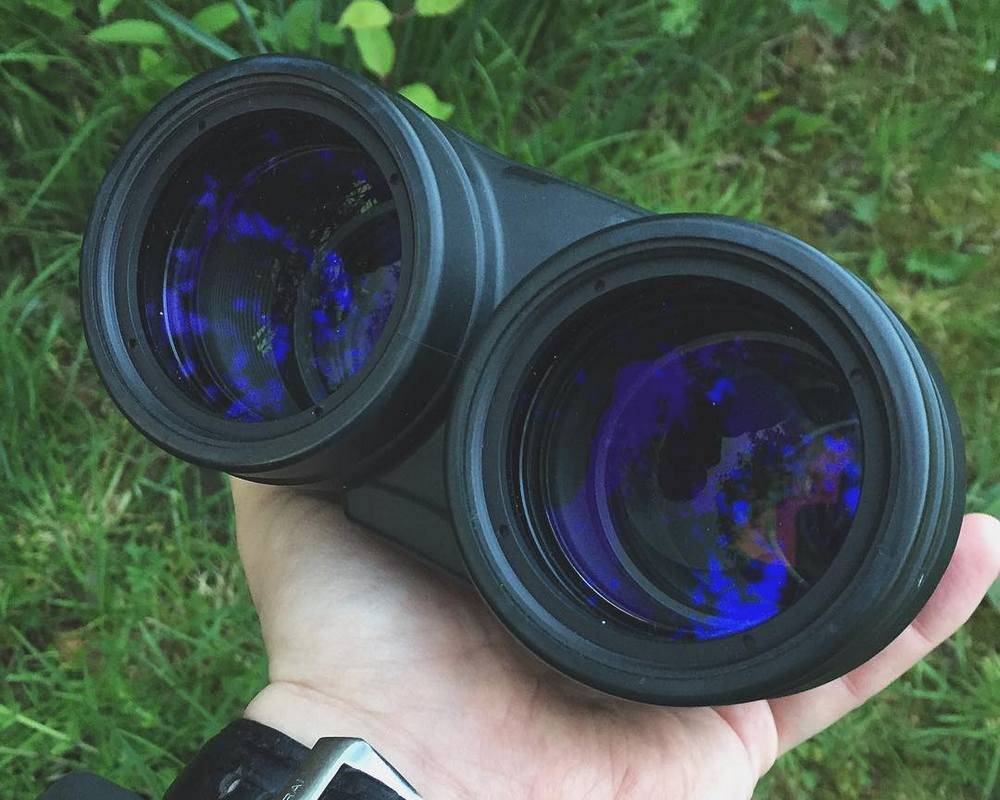
Via: @david_tidman
The 15x magnification may seem a bit high for some folks, but this bino has an image stabilization system that does an excellent job at reducing handshake.
Even if you are viewing from a moving car, these binos handle handshake so well it takes your viewing experience to a whole different level.
[wpsm_box type=”info” float=”none” text_align=”left”]
Another great feature is its wide field of view of 236 feet at 1000 yards. Given that the bino has a magnification of 15x, it is impressive that it offers such a large field view.
[/wpsm_box]
And the advantage this offers is that you will not miss any action because the large field view allows you to catch every bit of it with ease.
Plus you can quickly focus on your target if its starting moving using the large central focusing wheel on the bino. And don’t worry if you wear spectacles or not, these binos offer 15mm of eye relief, which is sufficient for people with good and bad eyesight.
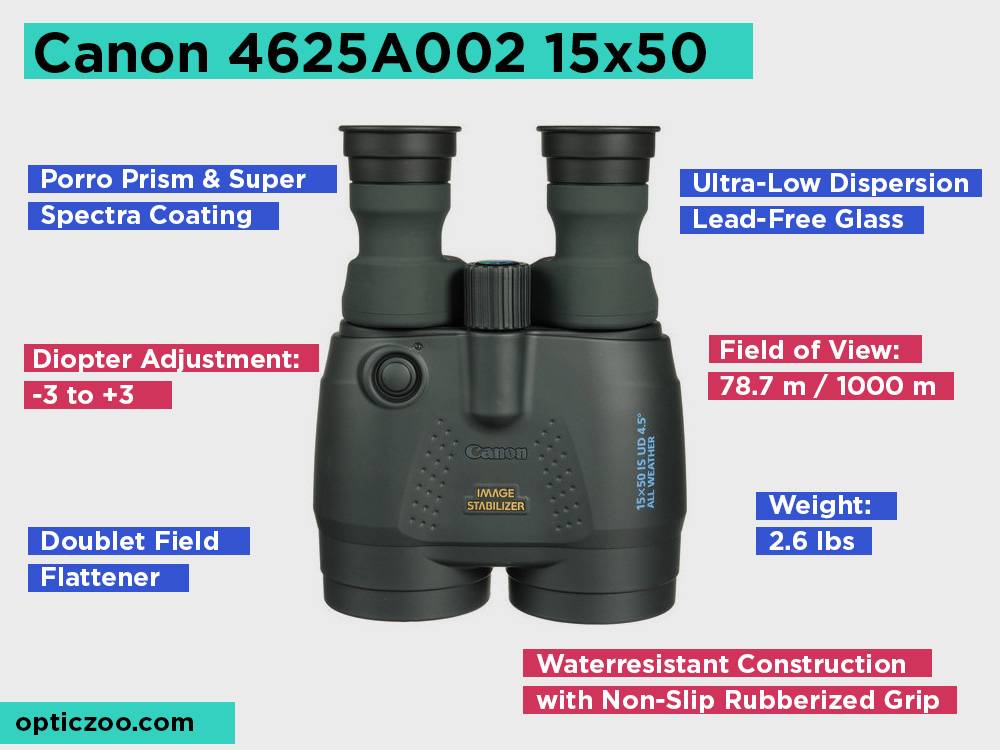
It is also worth pointing out that this is a porro prism bino, and while it does offer spectacular image quality, it’s also bulky and heavy. This is not so much of a problem as its tripod mountable.
Construction wise, this bino is made of a tough and durable material, which is rubberized to give you a firm grip and add an extra layer of protection against shock and water damage.
[wpsm_box type=”warning” float=”none” text_align=”left”]
But avoid immersing or dropping them in a pool of water as they are not 100% waterproof.
[/wpsm_box]
The one thing that may discourage people from buying these binos is the price tag. This beast is pricey and for good reasons. But look at what it has to offer.
It has great features and with its image stabilization system, you hand won’t get wobbly. And you can enjoy hours of wildlife viewing or sightseeing with ease and comfort.
So overall, the Canon 15×50 is an all-weather bino that delivers excellent performance. So although it is relatively expensive compared to other similar models, it is worth the investment.
Main Features
- Electronic Image Stabilization
- Porro Prism Optical Path
- Fully Super Spectra Coatings
- Ultra-Low Dispersion Lead-Free Glass
- Doublet Field Flattener
- Long-Eye Relief 15mm
- 15x High Magnification Ratio
- Extra Bright, Large Diameter 50mm Objective Lens
- Water-Resistant, All-Weather Design
- Non-Slip Rubberized Grip
[wpsm_column size=”one-half”][wpsm_pros title=”PROS:”]
- Extra-low dispersion glass lens to minimize color fringing
- Multicoated lenses to give your bright views and clear images
- 50mm objective lens for sharper views
- Wide field of view to help you track targets that are on the move
- 15x magnification for up close viewing
- Image stabilization system to prevent handshake
- Rubber armoring to give you a solid grip and protect the unit from water and shock damage
- Easy to use image stabilization button
- Long eye relief for easy and comfortable viewing
- Highly priced
[/wpsm_pros][/wpsm_column][wpsm_column size=”one-half” position=”last”][wpsm_cons title=”CONS:”]
- It’s bulky and heavy
- The eye cups are big, bulky and stiff
[/wpsm_cons][/wpsm_column]
[wpsm_box type=”dashed_border” float=”none” text_align=”left” width=”100%” ]
2. Canon 4624A002 18×50 Image Stabilization Binocular Review
[wpsm_column size=”one-half”]
[/wpsm_column]
[wpsm_column size=”one-half” position=”last”]
[wpsm_list type=”check” hover=”1″ gap=”medium”]
- Weatherproof Housing
- Porro Prism & Wide Angle
- Lead Free Glass
- Super Spectra Coating
- Doublet Field Flattener
[wpsm_button color=”blue” size=”medium” link=”https://www.amazon.com/dp/B00004THDE/?tag=opticzoo-20″ icon=”none” class=”” border_radius=”0 px” target=”_blank” rel=”nofollow”]Check Price on Amazon![/wpsm_button]
[rehub_affbtn btn_text=”Check Price on B&H Photovideo!” btn_url=”https://bhpho.to/30nOVNf” target=”_blank” ]
[/wpsm_column]
[/wpsm_box]
The Canon 4624A002 18×50 IS all-weather binoculars that can be used in different recreational outdoor activities like hunting, sightseeing, birding, and navigation.
It features an image stabilizer that keeps an image stable even when your hand shakes a little, particularly when your hand tires from holding the bino for too long. Let’s be honest, not many people can hold an 18×50 bino steady for long.
This feature makes it possible to see images clearly even when you are in a moving car. So it’s great for going on safaris.
Image Stabilizer
[wpsm_box type=”info” float=”none” text_align=”left”]
The Canon 18×50 IS has an image stabilizer that keeps the images steady even when you are on the move or when your hand gets shaky.
[/wpsm_box]
This is a feature, you might not find in many standard binos. So if you are looking for binoculars that can keep an image steady even when you are in motion, then the Canon IS would be the ideal option.
Field Flattened Lenses
Canon uses multi-coated lenses which are field flattened to help correct any image distortion and deliver sharp images. Not many brands use double field flattened lenses, and in fact, Canon is the first to use them in their binos.
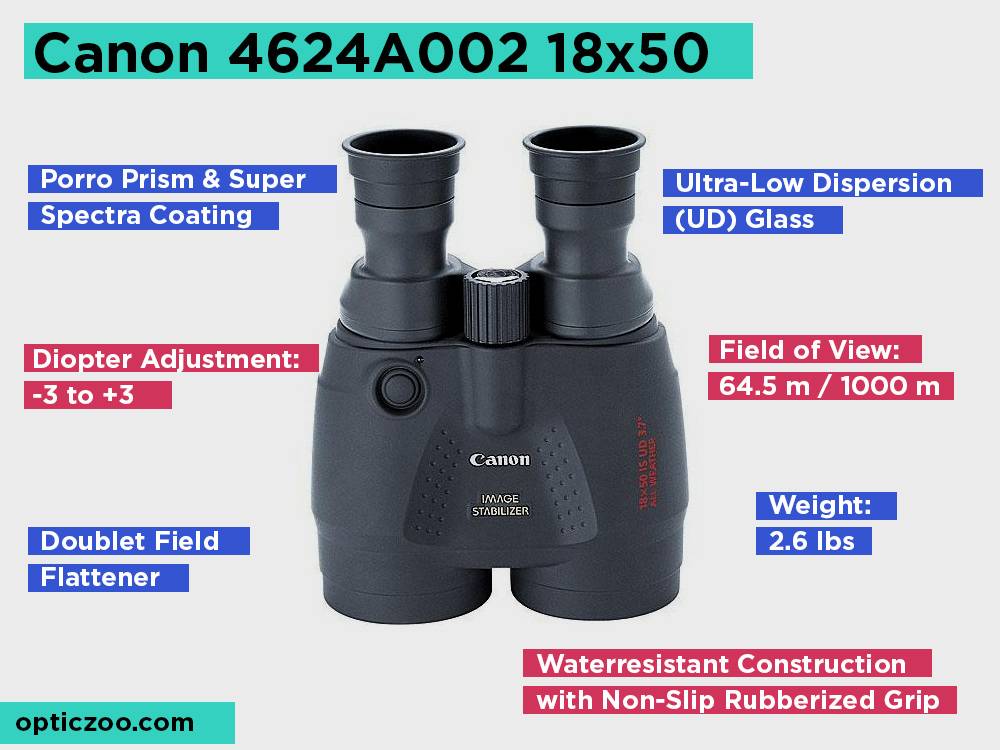
Magnification
The Canon 18×50 IS boasts an 18x magnification, which is quite high for certain activities like birding. Nevertheless, it’s great when you need to look at small animals and insects up close.
It also has a wide field of view owing to its 50mm sized objective lens. This allows you to see your entire view or scene such as a sports stadium.
Eye Relief
When choosing binos, eye relief becomes a key factor especially if you wear glasses. The Canon 18×50 IS has an eye relief of 15mm. This is sufficient for anyone who wears glasses or who desires a bino with good eye relief.
Main Features
- Built-in Image Stabilizer (IS) provides shake-free performance
- High magnification ratio: 18X
- Ultra-low dispersion (UD) glass elements for exceptional image quality
- Doublet field-flattener for sharp, distortion-free images from edge-to-edge
- Extra-bright, large diameter 50mm objective lens
- Long eye relief: 15mm
- Water-resistant construction with non-slip rubberized grip
[wpsm_column size=”one-half”][wpsm_pros title=”PROS:”]
- Image stabilizer feature that keeps images steady
- Sufficient eye relief for people with good and bad eyesight
- Wide field of view
- Large objective lens for a wide field of view
- Ideal for safaris, navigation, and astronomy
[/wpsm_pros][/wpsm_column][wpsm_column size=”one-half” position=”last”][wpsm_cons title=”CONS:”]
- They are heavy
- The image stabilizer function cannot work without batteries
[/wpsm_cons][/wpsm_column]
[wpsm_box type=”dashed_border” float=”none” text_align=”left” width=”100%” ]
3. Canon 0155B002 10×42 L Image Stabilization Binocular Review
[wpsm_column size=”one-half”]
[/wpsm_column]
[wpsm_column size=”one-half” position=”last”]
[wpsm_list type=”check” hover=”1″ gap=”medium”]
- Electronic Image Stabilization
- Ultra-Low Dispersion Lead-Free Glass
- Porro Prism Optical Path
- Fully Super Spectra Coatings
[wpsm_button color=”blue” size=”medium” link=”https://www.amazon.com/dp/B0007W4IW2/?tag=opticzoo-20″ icon=”none” class=”” border_radius=”0 px” target=”_blank” rel=”nofollow”]Check Price on Amazon![/wpsm_button]
[rehub_affbtn btn_text=”Check Price on B&H Photovideo!” btn_url=”https://bhpho.to/30nNFK1″ target=”_blank” ]
[/wpsm_column]
[/wpsm_box]
This waterproof binos by Canon have a magnification of 10x which makes them ideal for birding, stargazing, sightseeing, hiking, and wildlife viewing. The 42mm objective lens allows for a wide field of view, which means they are great for people who wear glasses.
Another great feature that makes it worth owning one of these is its image stabilizer feature. The feature keeps the images steady even when your hand shakes or when you are in moving car.
Waterproof Construction
The Canon 0155B002 10×42 L uses lead-free glass for fog-proof performance. They also have a solid armoring that allows for an easy, non-slip grip.
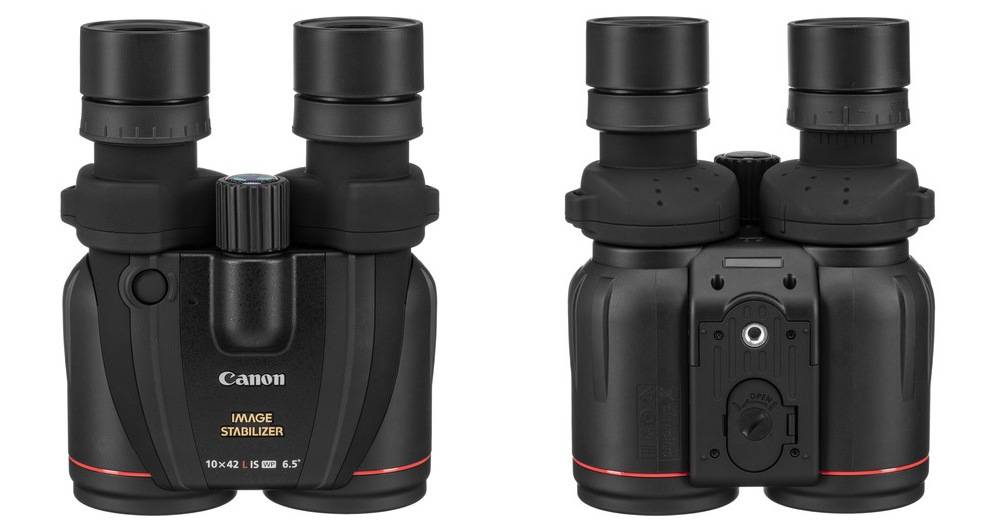
These are binos that you can use in any weather condition without having to worry about them getting damaged.
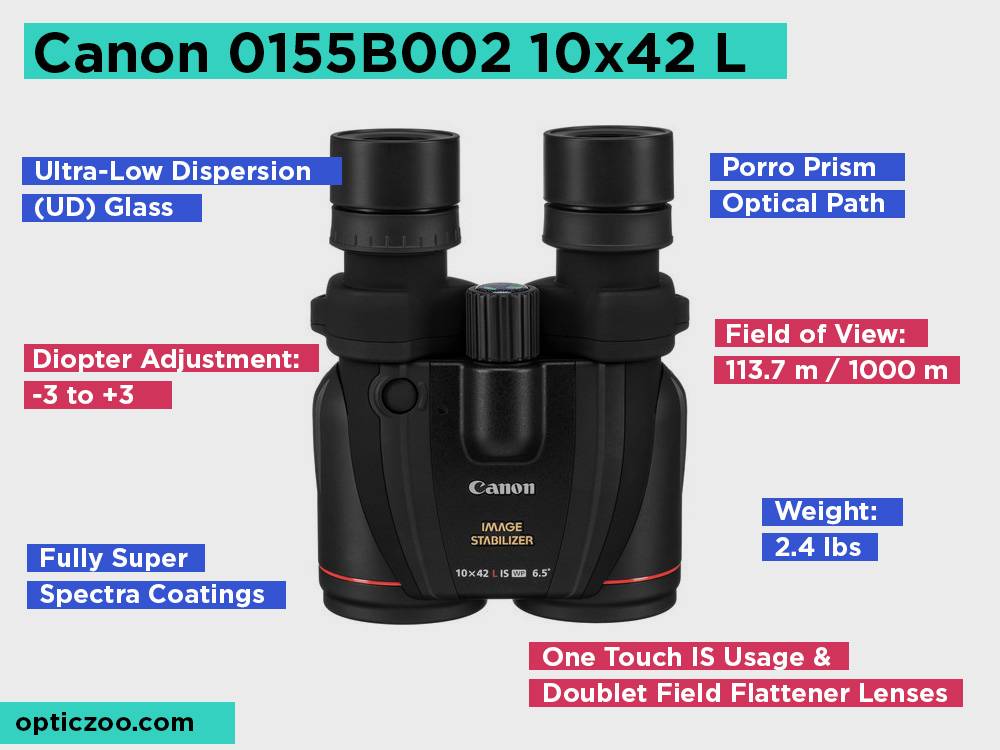
Image Stabilizer Feature
These binos have an image stabilizer feature that helps keep images steady when you are not. In case of unwanted movement, the feature stabilizes the image for you.
[wpsm_box type=”info” float=”none” text_align=”left”]
However, for this to happen, you must push the image stabilizer button, which cannot work without batteries. So for it to work, make sure your binos have batteries.
[/wpsm_box]
Quality Optics
The Canon 10×42 L IS WP is a Porro-prism bino that features a large objective lens and high magnification. It uses ultra-low dispersion glass that removes chromatic aberration rendering the images clear, sharp, and bright.
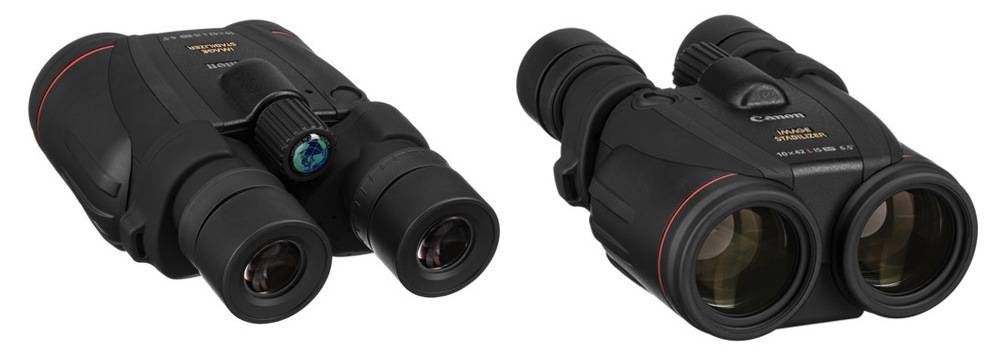
The lenses glasses are coated with anti-reflective coatings to minimize flare and enable it to deliver clear and sharp images in low-light conditions.
Main Features
- Canon’s first waterproof IS Binocular
- High performance L Lens with 2 Ultra-low Dispersion (UD) elements on each side
- Doublet Field Flattener Lenses for sharp, distortion-free images edge-to-edge
- Bright field-of-view from a 4.2mm exit pupil diameter, the largest of any Canon IS Binocular
- Wide angle rating from an apparent angle-of-view of 65°
- One touch IS usage
- Body components feature metallic coating to prevent fogging
- Distinctive, easy grip design
[wpsm_column size=”one-half”][wpsm_pros title=”PROS:”]
- Sufficient eye relief for people with or without eyeglasses
- Multi-coated lenses for sharp and bright viewing
- Large objective lens for a wide field of view
- High magnification ideal for birding, sightseeing, hunting, and other outdoor activities
- Ultra-dispersion lens glass that minimizes color fringing
- Waterproof construction
- Image stabilizer feature to keep the images steady when you are on the move or in case of unwanted movement
- Anti-fogging feature
- Long battery life
[/wpsm_pros][/wpsm_column][wpsm_column size=”one-half” position=”last”][wpsm_cons title=”CONS:”]
- It’s a Porro-prism bino and therefore it’s heavy
- The image stabilizer function cannot work without batteries
- Some consumers have complained that installing the batteries can be cumbersome
- Compared to similar binos, these ones are quite expensive
- It doesn’t come with a hand strap
[/wpsm_cons][/wpsm_column]
[wpsm_box type=”dashed_border” float=”none” text_align=”left” width=”100%” ]
4. Fujinon Techno Stabi TS1440 14×40 Image Stabilization Binocular Review
[wpsm_column size=”one-half”]
[/wpsm_column]
[wpsm_column size=”one-half” position=”last”]
[wpsm_list type=”check” hover=”1″ gap=”medium”]
- ±5° Stabilization
- Phase-Coated BAK4 Roof Prisms
- 4.0° Angle of View
- 100% Water & Fogproof
[wpsm_button color=”blue” size=”medium” link=”https://www.amazon.com/dp/B0000C16R8/?tag=opticzoo-20″ icon=”none” class=”” border_radius=”0 px” target=”_blank” rel=”nofollow”]Check Price on Amazon![/wpsm_button]
[rehub_affbtn btn_text=”Check Price on B&H Photovideo!” btn_url=”https://bhpho.to/30nMpGN” target=”_blank” ]
[/wpsm_column]
[/wpsm_box]
Fujinon like Canon is one of the leading manufacturers of image stabilization binocular. And the Techno Stabi TS definitely gives Canon IS binos a run for their money.
The Fujinon Techno Stabi TS1440 14×40 features an image stabilization function that is activated by the push of a button to deliver stable images at high magnification. It doesn’t matter if you are on the move, these binos are designed to reduce image distortion.
What’s more, is that they make no noise when the stabilization function is activated. This makes these binos great for tactical situations and emergency responses.
[wpsm_box type=”info” float=”none” text_align=”left”]
It is one of the best IS binos for viewing moving objects like cars or airplanes.
[/wpsm_box]
Image Stabilization
The image stabilization feature enables you to view an object even when on the move without any inconsistencies. This makes these binos great for viewing objects that are in motion.
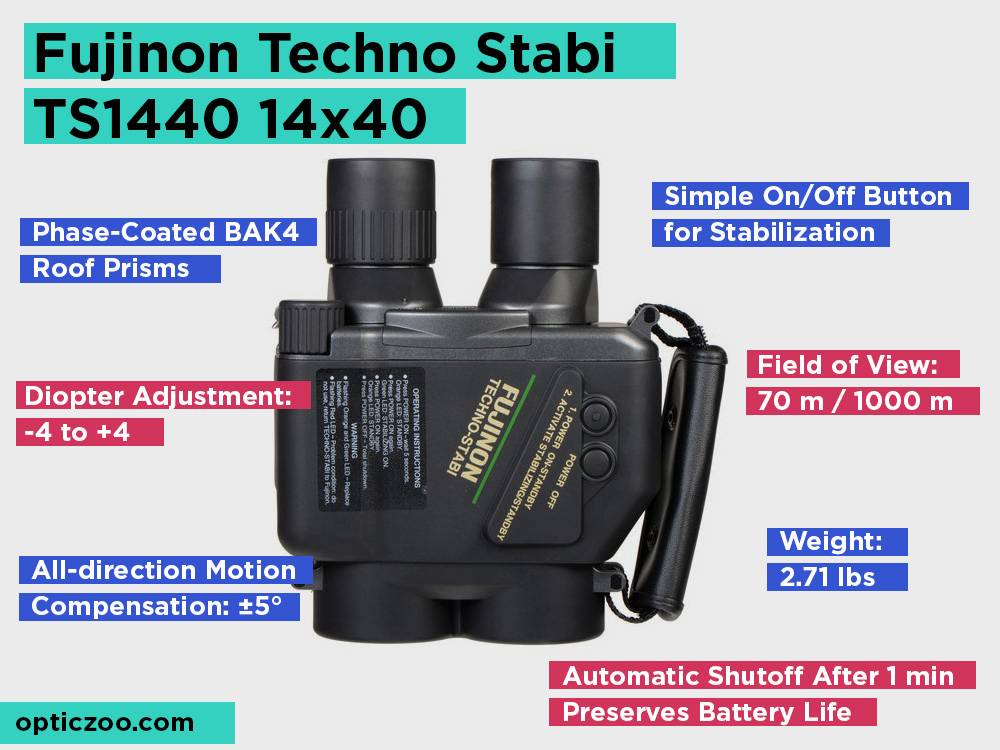
Multi-coated Lenses and Solid Construction
The TS 1140 uses multi-coated lenses to ensure that your views are clear. The coatings also help minimize chromatic aberration giving you clear and sharp views.

It has a solid construction that is both waterproof and fog proof. And its housing is designed to be non-slip.
Main Features
- Phase-Coated BAK4 Roof Prisms
- ±5° All-direction Motion Compensation
- ±4 Dioptric Correction
- 60-70mm Interpupillary Adjustment Range
- Full Fujinon EBC Multi-Coatings on all optical surfaces
- Simple On/Off Button for Stabilization
- 100% Water & Fogproof Stabilized Binocular
- Rubber-Armored Housing
- Automatic Shutoff After One minute preserves Battery Life
[wpsm_column size=”one-half”][wpsm_pros title=”PROS:”]
- Ideal for star gazing and other outdoor activities
- Solid waterproof and fog proof construct
- Multi-coated lenses for image clarity
- Image stabilization feature that creates a steady field of view
- Uses batteries which are easy to install
- Long battery life of up to 10 hours
[/wpsm_pros][/wpsm_column][wpsm_column size=”one-half” position=”last”][wpsm_cons title=”CONS:”]
- Beginners might find hard to use at the beginning
- Consumers have complained that the battery case is loose and can easily be lost
[/wpsm_cons][/wpsm_column]
Techno-Stabi 14 X 40 Product Video | Fujifilm:
[wpsm_box type=”dashed_border” float=”none” text_align=”left” width=”100%” ]
5. Canon 9526B002 12×36 IS III Review
[wpsm_column size=”one-half”]
[/wpsm_column]
[wpsm_column size=”one-half” position=”last”]
[wpsm_list type=”check” hover=”1″ gap=”medium”]
- Vari-Angle Prism Image Stabilization
- Eco-Friendly Lead-Free Glass
- Super Spectra Multicoated Optics
- Doublet Field-Flattener Lenses
[wpsm_button color=”blue” size=”medium” link=”https://www.amazon.com/dp/B00XOD5C1W/?tag=opticzoo-20″ icon=”none” class=”” border_radius=”0 px” target=”_blank” rel=”nofollow”]Check Price on Amazon![/wpsm_button]
[rehub_affbtn btn_text=”Check Price on B&H Photovideo!” btn_url=”https://bhpho.to/30wnzEI” target=”_blank” ]
[/wpsm_column]
[/wpsm_box]
The Canon 9526B002 12×36 IS III is one of those high-end binos you would want to own. The price tag alone is enough to attract you to this beauty.
But aside from being affordable, these compact 12x binos come with great features including an image stabilizer feature that makes it possible to view moving objects.
Although the 12x magnification maybe a bit much for some people, these binos deliver high-quality images even in poor lighting conditions.
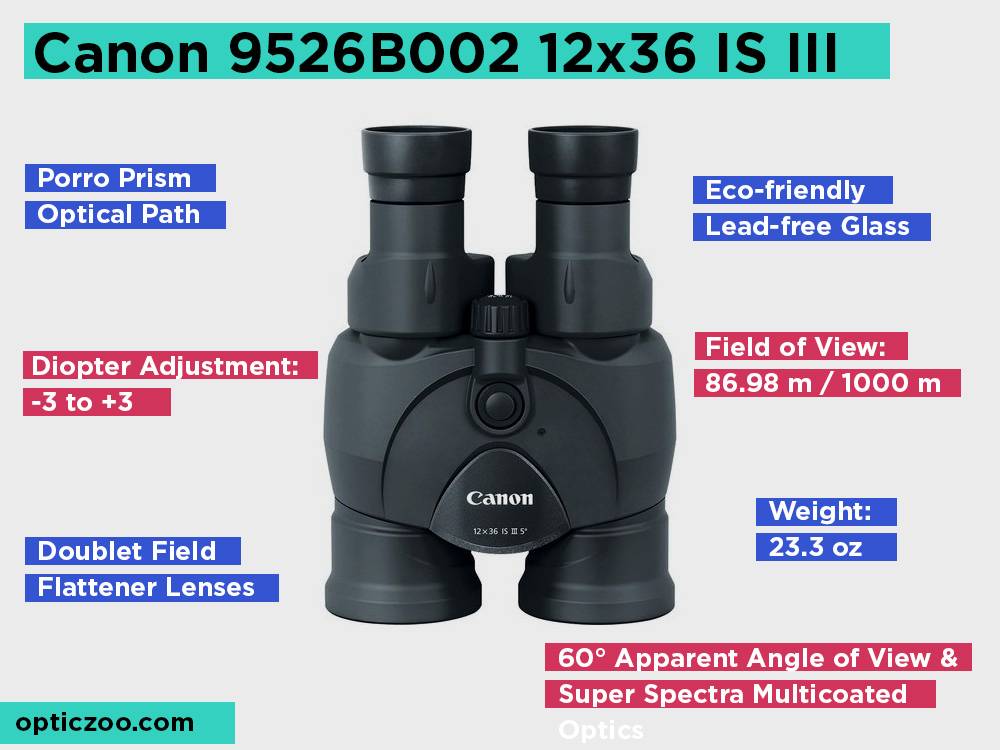
Solid Construct
Its body is rubber armored for easy handling and to ensure that they don’t slip from your hand. The rubber armoring also makes them water and shock-resistant.
The one thing that you might find a problem with these binos is the weight. They are Porro-prism binos, which means even though they are portable, they are heavy owing to the design.
Otherwise, when it comes to performance, they are designed to work efficiently, whether it’s raining, snowing or shining.
Coated Lenses
[wpsm_box type=”info” float=”none” text_align=”left”]
Aside from having a solid construct, these binos use coated field flattened lenses that deliver high-resolution images. The lenses are coated with Canon’s Super Spectra coatings that help prevent reflections that can make it difficult to see through the lenses.
[/wpsm_box]
Magnification
The Canon 12×36 IS III boasts of 12x magnification making it ideal for stargazing, hunting, wildlife, viewing and more. The 36mm objective lens although sufficient for some users, it may not be ideal for people who like a wide field of view.
Main Features
- Porro Prism Optical Path
- Doublet Field-Flattener corrects spherical aberration for distortion-free views, especially at the edges
- Eco-friendly Lead-free Glass
- 262′ Field of View at 1000 yd
- 60° Apparent Angle of View
- Center Focus Wheel
- ±3 Dioptric Correction
- Long 14.5mm Eye Relief, 3mm Exit Pupil
- Runs on two AA alkaline or NiMH batteries
[wpsm_column size=”one-half”][wpsm_pros title=”PROS:”]
- Anti-reflective and Super Spectra coated lenses to deliver clear images
- Image stabilizer to ensure that your field of view remains steady even though you are on the move
- Long eye relief for comfort especially for people who wear glasses
- High magnification for a better viewing experience
- Solid construct that is waterproof
- Ideal for viewing airplanes and other moving objects
[/wpsm_pros][/wpsm_column][wpsm_column size=”one-half” position=”last”][wpsm_cons title=”CONS:”]
- Its Porro-prism design makes it heavy
- It has a small field of view, which may not be good enough for some users
[/wpsm_cons][/wpsm_column]
[wpsm_box type=”dashed_border” float=”none” text_align=”left” width=”100%” ]
6. ZEISS Carl Optical 526000 20×60 IS Review
[wpsm_column size=”one-half”]
[/wpsm_column]
[wpsm_column size=”one-half” position=”last”]
[wpsm_list type=”check” hover=”1″ gap=”medium”]
- Porro Prisms
- Mechanical Image Stabilization
- ±7 Dioptric Correction
- Rubber Armoring & Rubber Eyecups
[wpsm_button color=”blue” size=”medium” link=”https://www.amazon.com/dp/B0000A5A9M/?tag=opticzoo-20″ icon=”none” class=”” border_radius=”0 px” target=”_blank” rel=”nofollow”]Check Price on Amazon![/wpsm_button]
[rehub_affbtn btn_text=”Check Price on B&H Photovideo!” btn_url=”https://bhpho.to/30sD6W9″ target=”_blank” ]
[/wpsm_column]
[/wpsm_box]
The ZEISS Carl Optical 526000 20×60 IS is one serious bino. With a 60mm diameter objective lens and 20x magnification, this is not your average bino. They are designed to deliver high-performance even in low light conditions.
Image Quality
[wpsm_box type=”info” float=”none” text_align=”left”]
Aside from having a 20x magnification, the Carl Optical IS has a large objective lens that makes viewing anything easy and hassle-free. In addition, it has an image stabilization feature, which with the help of a gyro keeps images steady at all ranges.
[/wpsm_box]
The high-quality optical system and multi-coated lenses enable the binos to deliver images as sharp as a tack.
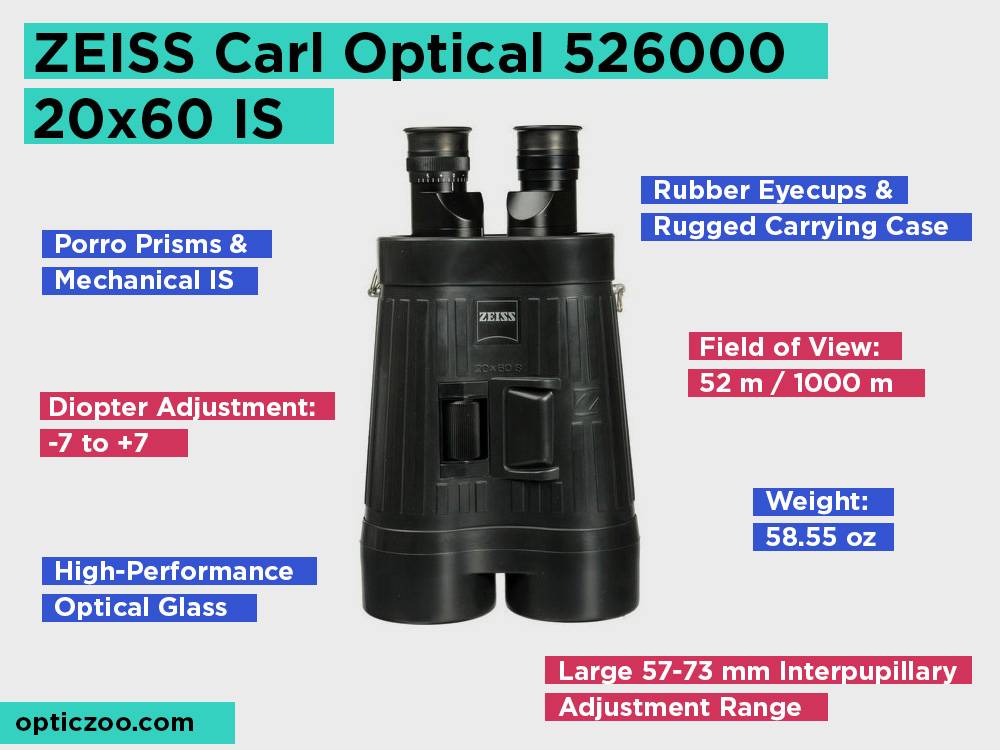
Design and Construct
The Zeiss Carl Optical 20×60 IS is a big bino with a spectacularly beautiful design and color. It has a solid construction that is weatherproof and shockproof. So with good care, these binos can last for years without getting damaged.
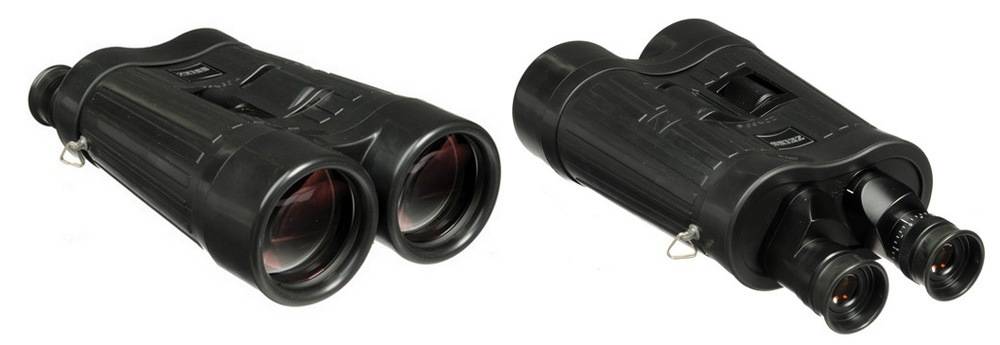
In any case, they are waterproof, the only problem you would have if they fell in a body of water is retrieving them.
Main Features
- Porro Prisms & Rubber Eyecups
- ±7 Dioptric Correction customizes the viewing for different left/right eye focusing
- Mechanical Image Stabilization System compensates for hand tremors, without batteries
- Ridged Rubber Armoring provides a secure and comfortable grip, as well as added shock resistance
- Geometric Brightness of 9 and a Twilight Factor of 34.6 render use mainly for daylight conditions and early twilight
- Large 57-73mm Interpupillary Adjustment Range allow comfortable tube spread for those with wider facial features
- Premium Lens Coatings and High-Performance Optical Glass for bright and razor-sharp image quality
- Comes with Rugged Carrying Case for ease of transport
[wpsm_column size=”one-half”][wpsm_pros title=”PROS:”]
- Image stabilization feature to prevent image distortion caused by movement
- Coated lenses for sharp viewing
- Wide field of view for better viewing
- High magnification for clear viewing
- Solid construct that is weatherproof
- Beautiful exterior design
[/wpsm_pros][/wpsm_column][wpsm_column size=”one-half” position=”last”][wpsm_cons title=”CONS:”]
- If you don’t have deep pockets opt for something cheaper because these binos are pretty pricey
[/wpsm_cons][/wpsm_column]
Buyer’s Guide
There are a couple of reasons why you would want to own an image stabilizer bino. First, they are equipped with an image stabilization feature that keeps images steady when you are on the move.
[wpsm_box type=”info” float=”none” text_align=”left”]
You could be in a car or boat and whatever you are viewing is not interrupted by the movement. Furthermore, they are great for viewing moving objects like planes and boats.
[/wpsm_box]
And it doesn’t matter how far the object is, if you have a model with a high magnification, you can comfortably and clearly see it.
Types of Image Stabilized Binos
Image stabilized binos are classified as active systems or passive systems.
Active Systems
If an IS bino has an active system, it means it adjusts an image automatically using an electric sensor. When the sensor detects a change in altitude, it changes the lens or the angle of the prism to redress the view of the image.
[wpsm_box type=”info” float=”none” text_align=”left”]
Generally, active systems alter the mechanism of the binos electronically when a change in latitude occurs to keep the field of view steady at all times.
[/wpsm_box]
Of course, unless you fall down, that is a whole different story. But even if you experience unwanted movement, like shaky hands, the system corrects the problem immediately.
Effect of IS in Canon Image Stabilizer Binoculars:
Passive Systems
Passive systems don’t have an electronic sensor. An image is usually adjusted manually and you can do it using a gyroscope or by freeing the prism from the covering/housing.
[wpsm_box type=”info” float=”none” text_align=”left”]
The function of the gyroscope is to steady the system and hence provide you with stable images. You get the same result when you free the prism from its protective cover so that they are not affected by any kind of bino movement.
[/wpsm_box]
Binoculars with passive systems are usually used for observing moving objects like airplanes and boats. The system works well with high magnification binos as well as video and camera lenses.
What Makes a Good Image Stabilization Binoculars?
Different IS binos come with different features. The one standard feature they have in common is the image stabilization feature, which minimizes image distortion when you or the image is in motion.
But there are factors that play a key role when choosing an IS bino. And here some of them.
Field of View
Having a bino that has a wide field of view is better than one that has a small field of view for activities like wildlife viewing, star gazing, birding, and hunting.
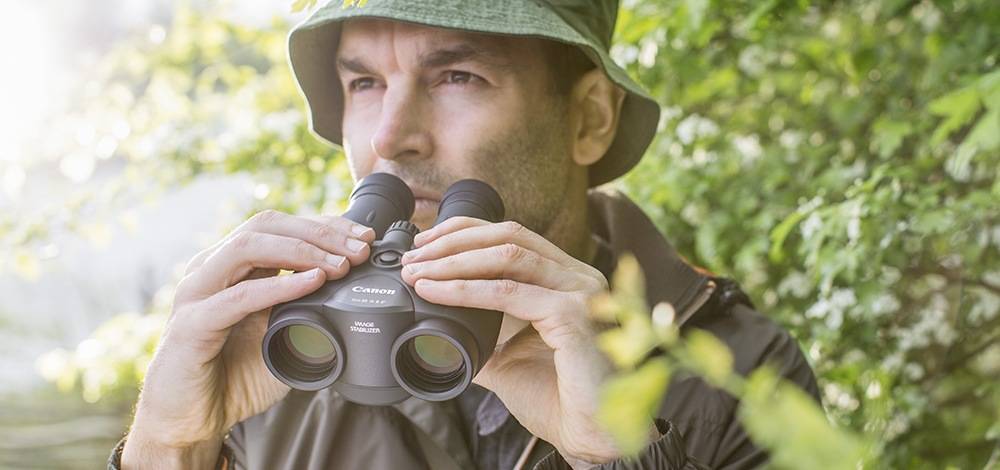
This is because a wide field of view allows you to see more of your view. And it also allows you to see what you want to see without you needing to move much.
But the one you need to know about the field of view is that it works hand in hand with the magnification. If you crank up the magnification on your bino, the field of view becomes smaller. This enables you to get a close-up view of your target.
When you lower the magnification, the field of view becomes wider giving you a broader view of your scene or target.
And another thing, binos with a wide field of view are especially ideal for people who wear glasses. So basically when you are comparing IS binos, consider what you want to use them for when it comes to the field of view.
[wpsm_box type=”warning” float=”none” text_align=”left”]
Also, if you have poor eyesight, you might want to avoid binos that have a small field of view.
[/wpsm_box]
Magnification
Some bino users believe that magnification is what makes quality binoculars although this is not quite true. But having said that, magnification is a key factor when selecting IS binos.

And its significance comes when you need to use your binos for activities like boating, sailing, and hunting. Or when an image is at a far distance.
[wpsm_box type=”info” float=”none” text_align=”left”]
Most IS binoculars have higher magnification than standard binos. This is because IS binos are designed to capture objects that are in motion or that are located at very long-ranges.
[/wpsm_box]
So depending on the activity you want to engage in, this can help you determine the magnification to go for.
Size of the Objective Lens
The size of the objective lens comes into play if you intend to use your binos in harsh weather conditions. In foggy conditions, it’s easier to see your view or target through a large objective lens than it would be through a small one.
What to Consider When Choosing an Image Stabilized Binoculars
Here are some key factors that you need to look into when buying IS binos.
Image Stabilization System
When choosing an IS bino, you need to determine if you want one that has an active system or a passive system. Both systems are great for observing objects that are in motion.
[wpsm_box type=”info” float=”none” text_align=”left”]
The only difference is the active system uses an electronic sensor to steady the bino and the passive one uses a gyroscope to deliver a steady image.
[/wpsm_box]
With the active mechanism, you have to push down a button continuously as you focus on your view. But with the passive mechanism, you don’ have to do that to get a steady image.
Lens Coating
It doesn’t matter what type of binos you want to buy, lens coatings are a key factor when comparing binos.
[wpsm_box type=”info” float=”none” text_align=”left”]
Lens coatings control the amount of light that passes through the lenses. And depending on how much light passes through, this determines how clear and sharp the images appear.
[/wpsm_box]
Most IS binos come with coated lenses for clear viewing and the more the coatings on the lenses, the brighter and sharper the images.
Binos with multi-coated lenses are ideal in weather conditions where it’s hard to see anything.
Image Clarity
If binos cannot deliver clear images, then they are basically worthless. Any standard bino should be able to provide clarity within a certain distant if not anything else.
[wpsm_box type=”info” float=”none” text_align=”left”]
The advantage IS binos have over standard binos is that they are designed to deliver clearer, sharper, and brighter images. So when selecting which IS bino to buy, think clarity.
[/wpsm_box]
Construction
When choosing IS binos, choose binos that are shockproof, waterproof, and fog proof. Don’t limit yourself by buying binos that can only perform in certain conditions.
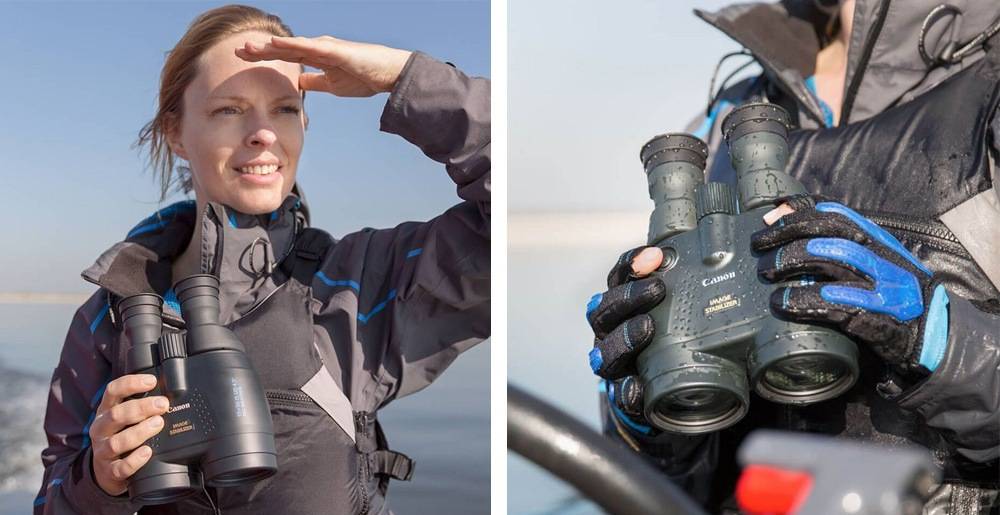
Weight and Size
Porro-prism binos are heavier than roof prism binos. And most IS binos have a Porro-prism design. So technically, you’ll find them heavier than standard binos.
The good thing is that IS binos are designed for activities that don’t require you to hold them for hours at a time.
Warranty
When deciding on an IS bino, don’t forget to check the warranty. Some binos have a one year warranty and some have a two or more year warranty. It’s up to you what kind of warranty you want.
[wpsm_box type=”info” float=”none” text_align=”left”]
What you need to do is read the fine details of the warranty to see what the manufacturer says they can repair for free and under what circumstances or situations.
[/wpsm_box]
Budget
Truth be told, image stabilization binos are more expensive than most standard binos. You can find an IS bino costing over $5,000 and you can also find one that is under $1000. So when selecting an IS bino compare the pricing.
You can find some quality IS binos that don’t cost a bomb. But again, it all depends on what you can and cannot afford. On average, most IS binos are rather pricey, but some are definitely more affordable than others.
Conclusion
Image stabilized binos are great for activities like boating and sailing. If you love to observe moving objects this would be the ideal binos to buy. They come with high-quality optics, solid constructs, and systems to stabilize images.
But be ready to part with some serious cash because IS binos are more expensive than standard binos.
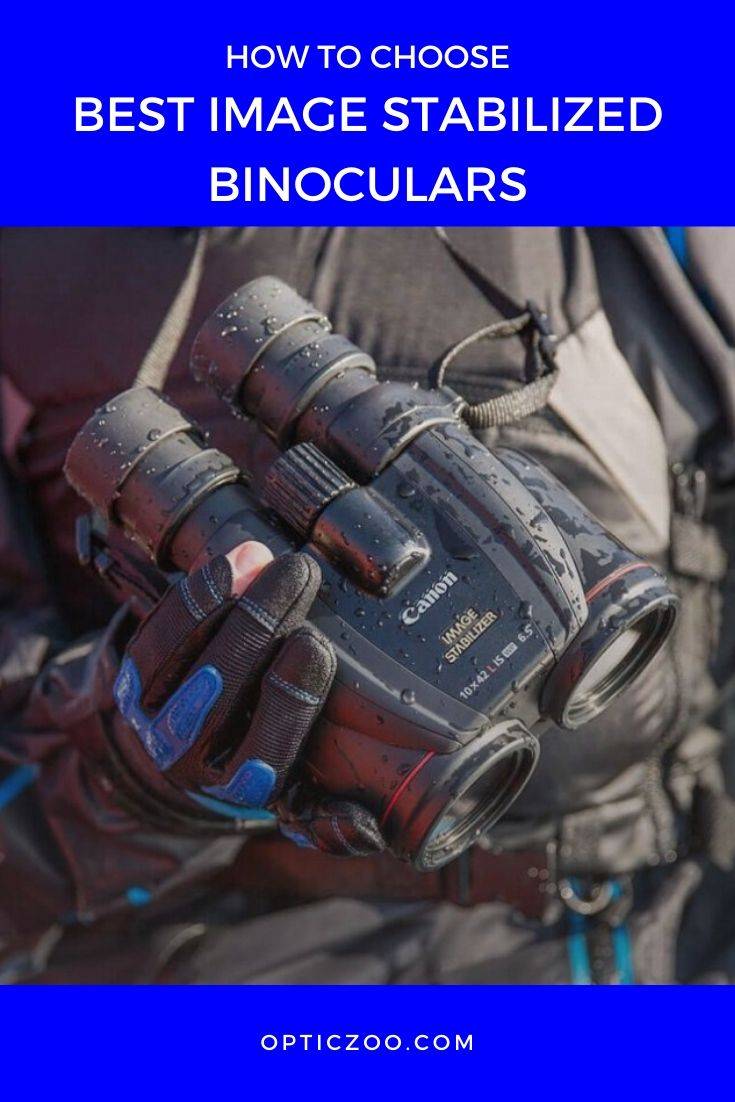



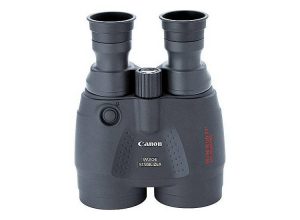
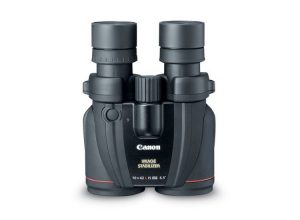
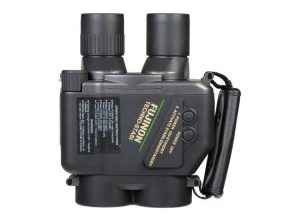
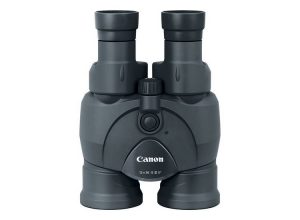
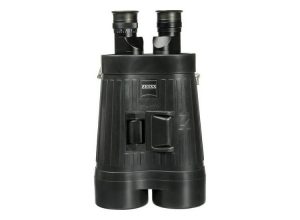
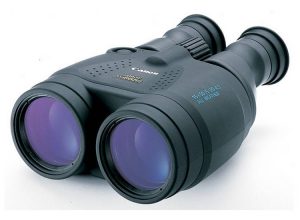
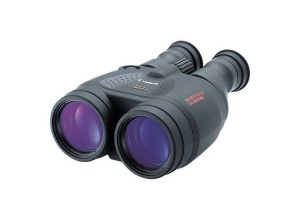
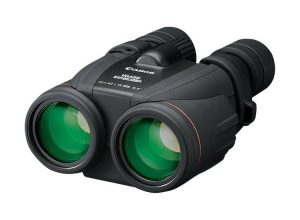
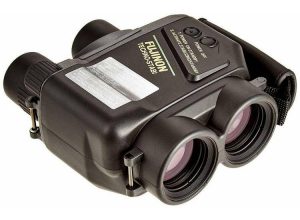
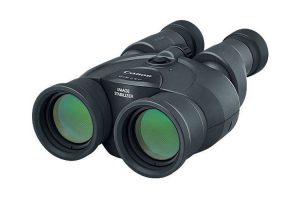
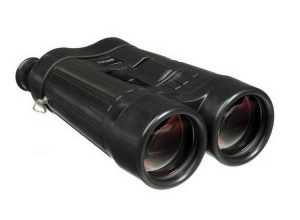
How could you not include the Canon 15×50 the superior choice out of all of these
Will fix it soon. Thank you!